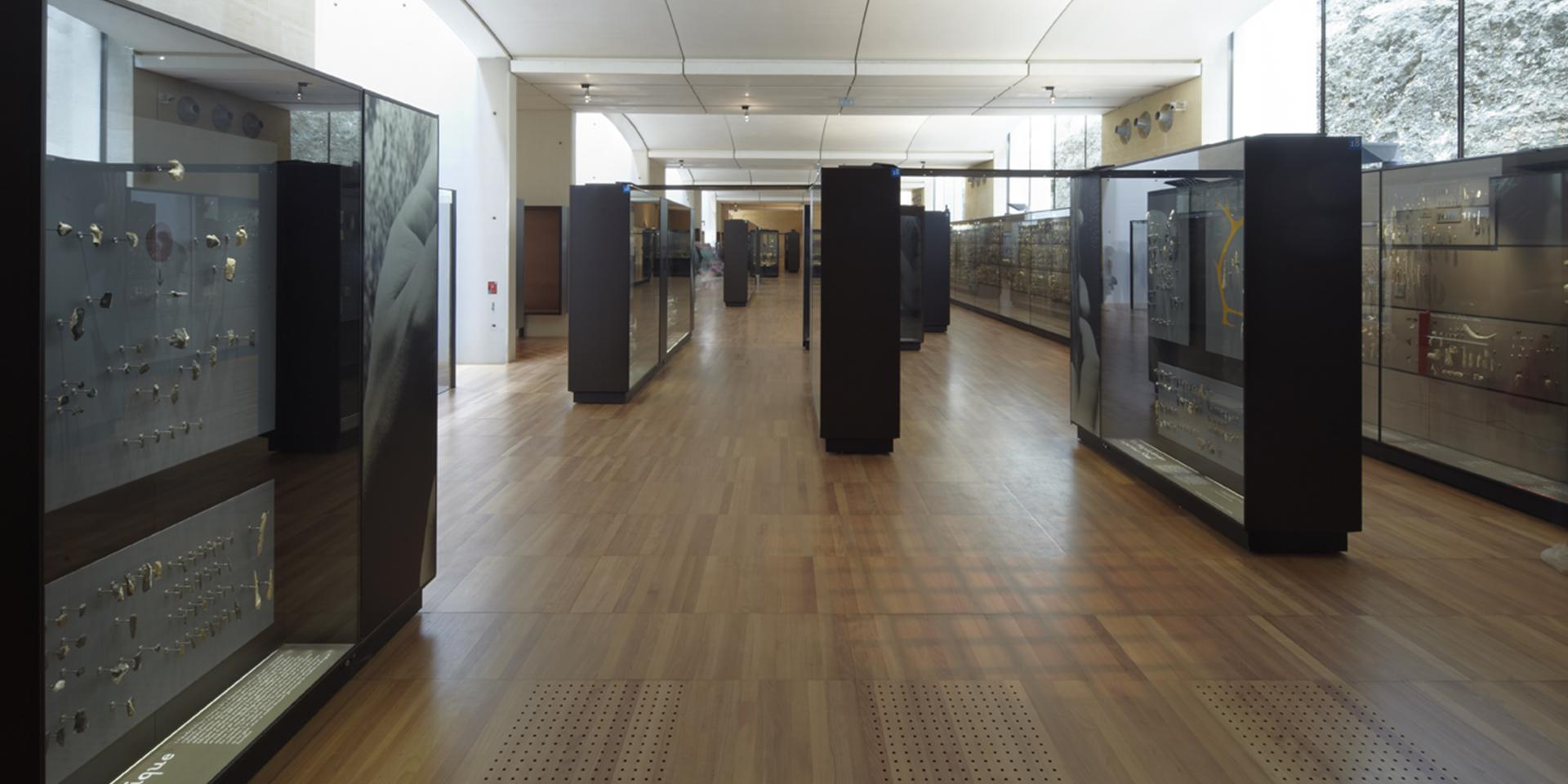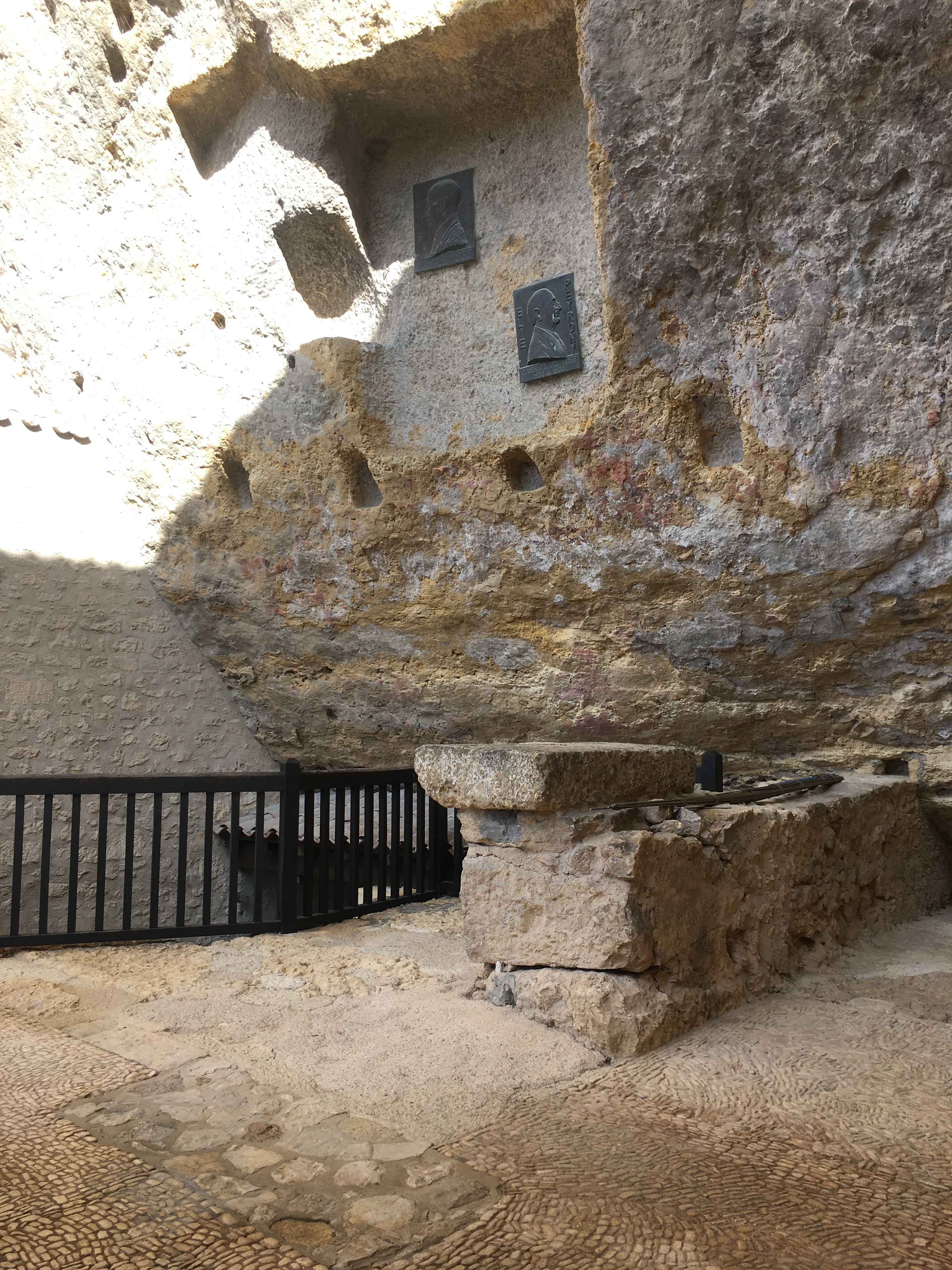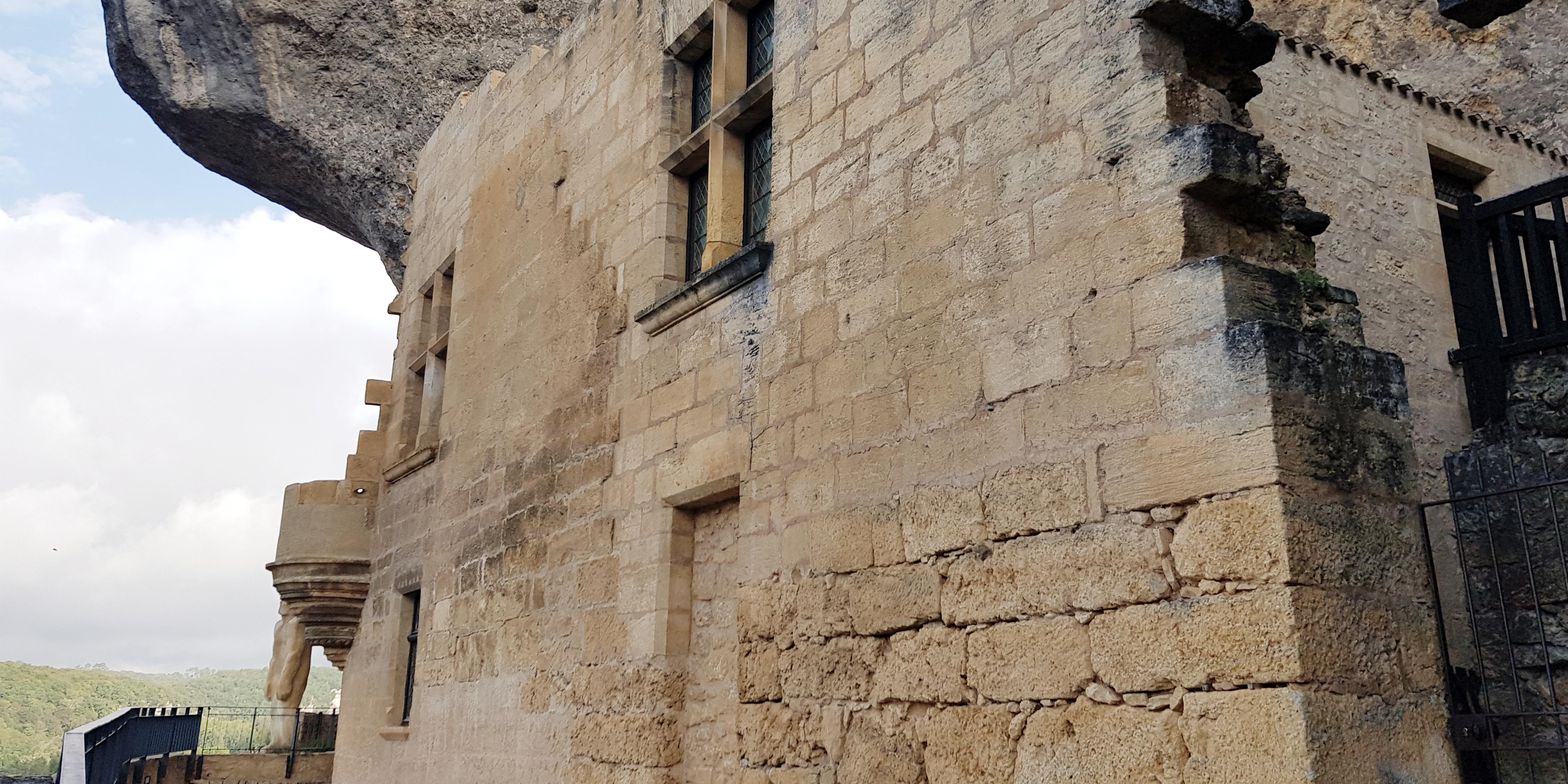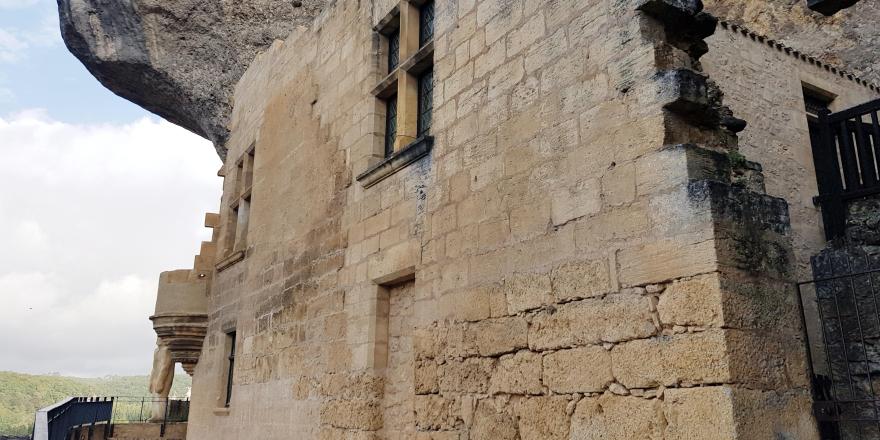
Les espaces
The Castle
Making the observation about the durability of the dwelling clinging to the cliff’s edge is a necessary truism. The privileged placement of its upper terrace overlooking a vast hunting territory and an inevitable thoroughfare for hordes of reindeer was without a doubt one of the main reasons explaining the Magdalenians’ choice 12,000 years ago. Traces of their settlement still survive today, wedged between the two bodies of the castle building, where they were discovered and excavated at the beginning of the 20th century. But between these two extremes, and after a medieval gap that is not well understood and to which we probably owe the numerous scars left in the rock (holes for posts and beams, larmiers and troglodytic dwellings called cluzeaux), the history of the Château des Eyzies deserves to be lingered over.
Contrary to assertions of traditional literature, this solid structure was a relatively recent creation whose construction is closely tied to the private history of the Beynac family. It was actually in the donation deed of Jeanne de Campnac in favour of her youngest son Jean-Guy de Beynac, recorded in 1585, that we find the first mention of the castle’s existence. A few years earlier (December 11, 1578), Jean-Guy obtained the right to build a fortified house in the place of his choice. Thus, virtue was returned to this colourful figure, whose existence was like a swashbuckling novel, for having recognised the interest of this placement that was well sheltered and well exposed, at the confluence of the Beune and Vézère rivers, nearly inevitable communication routes in this wooded region.
A quarter century after its construction, the castle was nearly razed by a decision of the Privy Council of March 1606, but the intervention of Turenne suspended the threat. After Jean-Guy’s death around 1615, his heirs only brought slight modifications to the building, especially as war did not spare this family that lost three sons on the battlefields of Louis XIV. In 1748, the castle and the grounds fell to Elisabeth de la Boire de Campagne by marriage; she resided there until her death. Géraud, her grandson, expressed the desire to undertake the renovation of the structure, but the Revolution put an end to it by forcing him to emigrate. In an ironically tragic twist, François Lassudrie purchased the building in the year 1100… to make it into a stone quarry!

Thus began the dismemberment pursued by the heirs, which lasted until 1846, the date the Esclafer family saved the life of the castle by buying it. It was about time! Of this desolated ruin, only a few partially destroyed walls, a few mullioned windows, a bartizan; inside, two vaulted rooms and two monumental fireplaces had escaped the disaster. In 1913, Denis Peyronyacquired the ruins of the Château des Eyzies in the name of the State in order to install an archaeological search repository coupled with a true museum: another chapter was about to begin…


